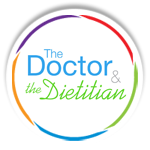Decreasing sugar consumption is a large part of healthy eating. Diets high in processed sugar stimulate the brain’s dopamine pathway, the pleasure-sensing area of the brain. The brain responds by wanting more and more, resulting in an ongoing struggle with sugar cravings and overeating
While there are obvious sugary foods like cookies and candy, all types of prepared foods can be high in fructose, sucrose, and corn syrup, alternative names for sugar commonly found on ingredient lists. Even deli or pre-made perishable foods can contain “hidden” sugars. For example, some brands of premade coleslaw have 13 grams of sugar per half-cup. Instead, you can easily make coleslaw at home and leave out the added sugar.Cooking at home using fresh, whole foods is the best way to avoid excessive sugar and calories.
Natural sugar, like that found in fruit, is better for you than added, refined sugar. But be careful with fruit juice! Even as a natural sugar source, a 12 ounce serving of apple juice still contains 38 grams of sugar. Instead, try adding a splash of fruit juice to sparkling water, or just eat an apple. Same with coffee drinks. Instead of a mocha frappuccino, have a regular coffee and a square of dark chocolate. You’ll decrease the sugar and calories,but still get a chocolate and caffeine fix.
Aspire to cook from scratch. By cooking with different proteins, carbohydrates, good fats, herbs, and spices, a variety of tastes can be experienced. In fact, once people begin to experience tastes other than sweetness, they can retrain their brains to enjoy a variety of tastes: salty, sour, bitter, savory, spicy and sweet. Retraining the brain can be challenging at first, considering how bombarded we are with sugary foods. But it is a battle worth fighting—for your health!



